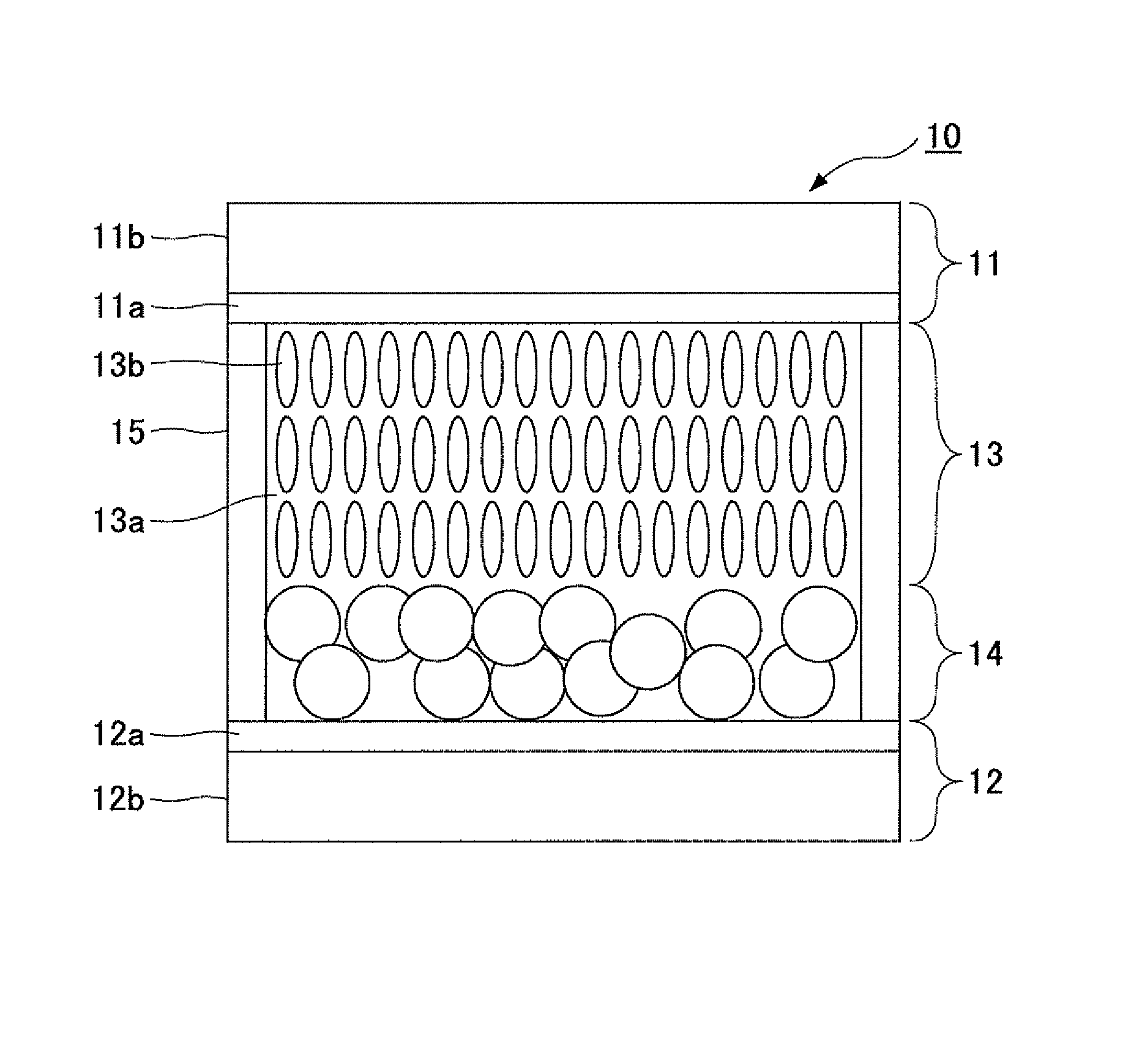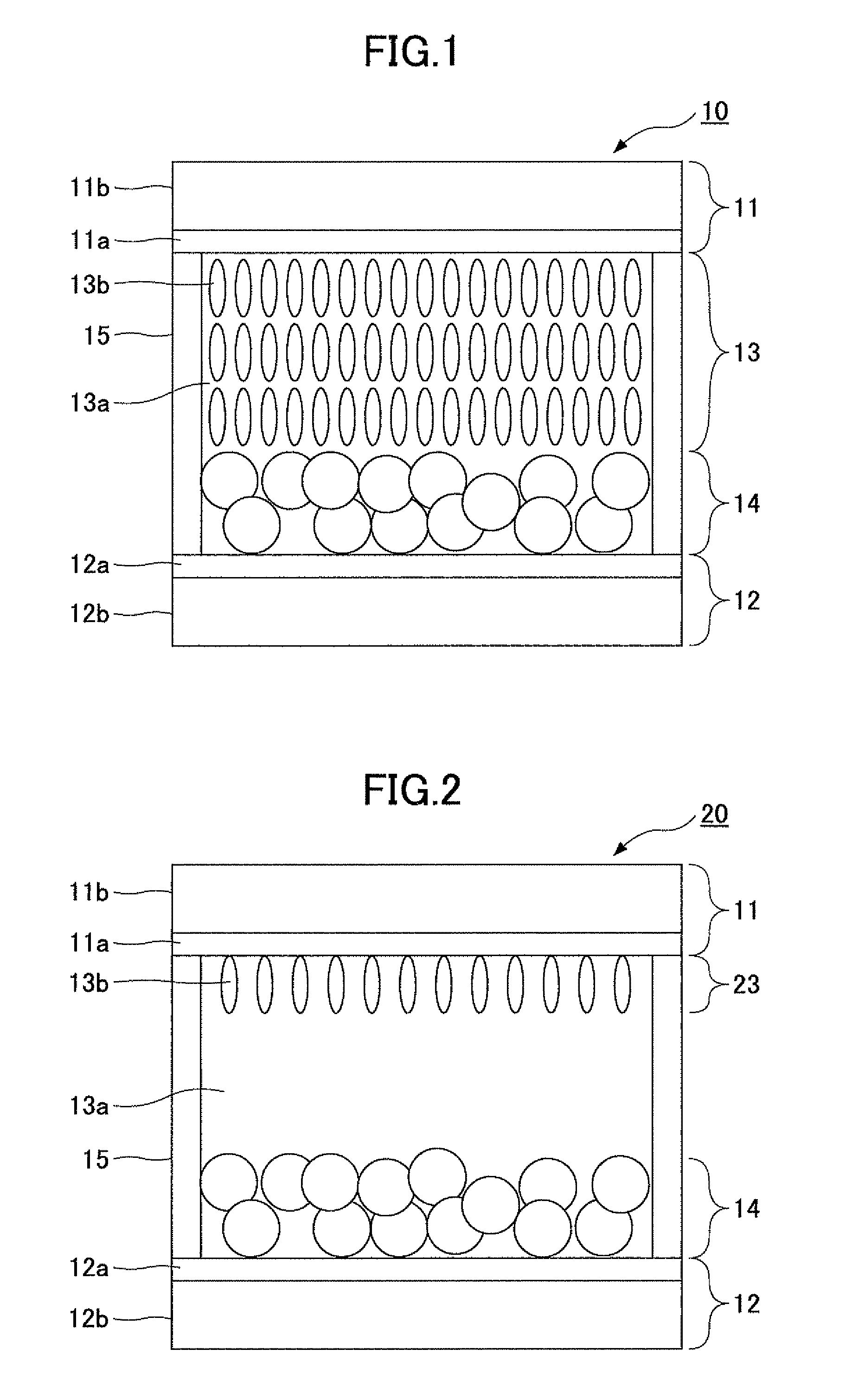Electrochromic compound, electrochromic composition, and display element
a technology of electrochromic composition and compound, applied in the direction of organic compounds, group 5/15 element organic compounds, instruments, etc., can solve the problems of difficult multi-color display, deterioration of visibility, and difficulty in using electronic papers, and achieve the effect of less coloring and sharp light absorption spectrum characteristi
- Summary
- Abstract
- Description
- Claims
- Application Information
AI Technical Summary
Benefits of technology
Problems solved by technology
Method used
Image
Examples
example 1-1
Practical Example 1-1
Synthesis of Electrochromic Compound (1-2)
[0262]FIG. 4 illustrates a flow of synthesis of electrochromic compound (1-2).
[0263]After 5.6 g of 4-acetylpyridine, 7.0 g of ethyl isonicotinate, and 30 ml of 1,4-dioxane were charged into a reaction flask and 5.2 g of potassium tert-butoxide was gently added thereto, agitation at 90° C. for 1 hour and standing to cool were conducted. After a reaction liquid was diluted with 80 ml of water, 7 ml of acetic acid was added to precipitate a product. After the precipitated product was filtered, washing with water and drying were conducted to obtain 2.7 g of compound (1-A).
[0264]3.36 g of hydroxylamine hydrochloride, 1.93 g of sodium hydroxide, and 32 ml of ethanol were charged into a reaction flask and agitation was conducted at 40° C. for 10 minutes. Then, after 2.7 g of compound (1-A) was thrown thereto and agitation under reflux was conducted for 1 hour, 2.1 g of sodium hydroxide was added thereto and agitation under refl...
example 1-2
Practical Example 1-2
Synthesis of Electrochromic Compound (1-10)
[0278]After 0.45 g of compound (1-B), a suitable amount of ethyl bromide, 3 ml of 1-propanol, and 6 ml of water were charged in a reaction flask and agitation was conducted at 90° C. for 40 hours, standing to cool was conducted. A reaction liquid was discharged into a mixed liquid of 15 ml of water and 30 ml of ethyl acetate, and an aqueous layer was fractionated. After the obtained aqueous layer and 20 ml of concentrated hydrochloric acid were charged in a reaction flask and agitation was conducted at 90° C. for 23 hours, standing to cool was conducted. After water was distilled out from the reaction liquid and a tar-like residue was dissolved in methanol, dropping into a mixed solvent of 2-propanol / ethanol (volume ratio 2 / 1) was conducted under agitation was conducted to crystallize a product. Furthermore, after filtration, washing with 2-propanol and drying were conducted to obtain 0.30 g of electrochromic compound (...
example 1-3
Practical Example 1-3
Synthesis of Electrochromic Compound (1-11)
[0284]Electrochromic compound (1-11) was obtained similarly to electrochromic compound (1-2) except that diethyl 4-(bromomethyl)benzylphosphonate was used instead of diethyl 2-bromoethylphosphonate.
[0285][Manufacturing of Display Element]
[0286]A display element 30 was obtained similarly to practical example 1-1 except that a 1.5 mass % solution of electrochromic compound (1-11) in 2,2,3,3-tetrafluoropropanol was used instead of a 1 mass % solution of electrochromic compound (1-2) in 2,2,3,3-tetrafluoropropanol.
[0287][Color Development / Erasing Test]
[0288]When a negative electrode and a positive electrode were connected to a display electrode 11a and opposing electrode 12a of the display element 30, respectively, and a voltage of 3.0 V was applied for 0.5 seconds, cyan color development was provided. Then, when a voltage of −4.5 V was applied for 2 seconds, complete color erasing was provided and a white color was recover...
PUM
| Property | Measurement | Unit |
|---|---|---|
| time | aaaaa | aaaaa |
| time | aaaaa | aaaaa |
| specific surface area | aaaaa | aaaaa |
Abstract
Description
Claims
Application Information
 Login to View More
Login to View More - R&D
- Intellectual Property
- Life Sciences
- Materials
- Tech Scout
- Unparalleled Data Quality
- Higher Quality Content
- 60% Fewer Hallucinations
Browse by: Latest US Patents, China's latest patents, Technical Efficacy Thesaurus, Application Domain, Technology Topic, Popular Technical Reports.
© 2025 PatSnap. All rights reserved.Legal|Privacy policy|Modern Slavery Act Transparency Statement|Sitemap|About US| Contact US: help@patsnap.com



